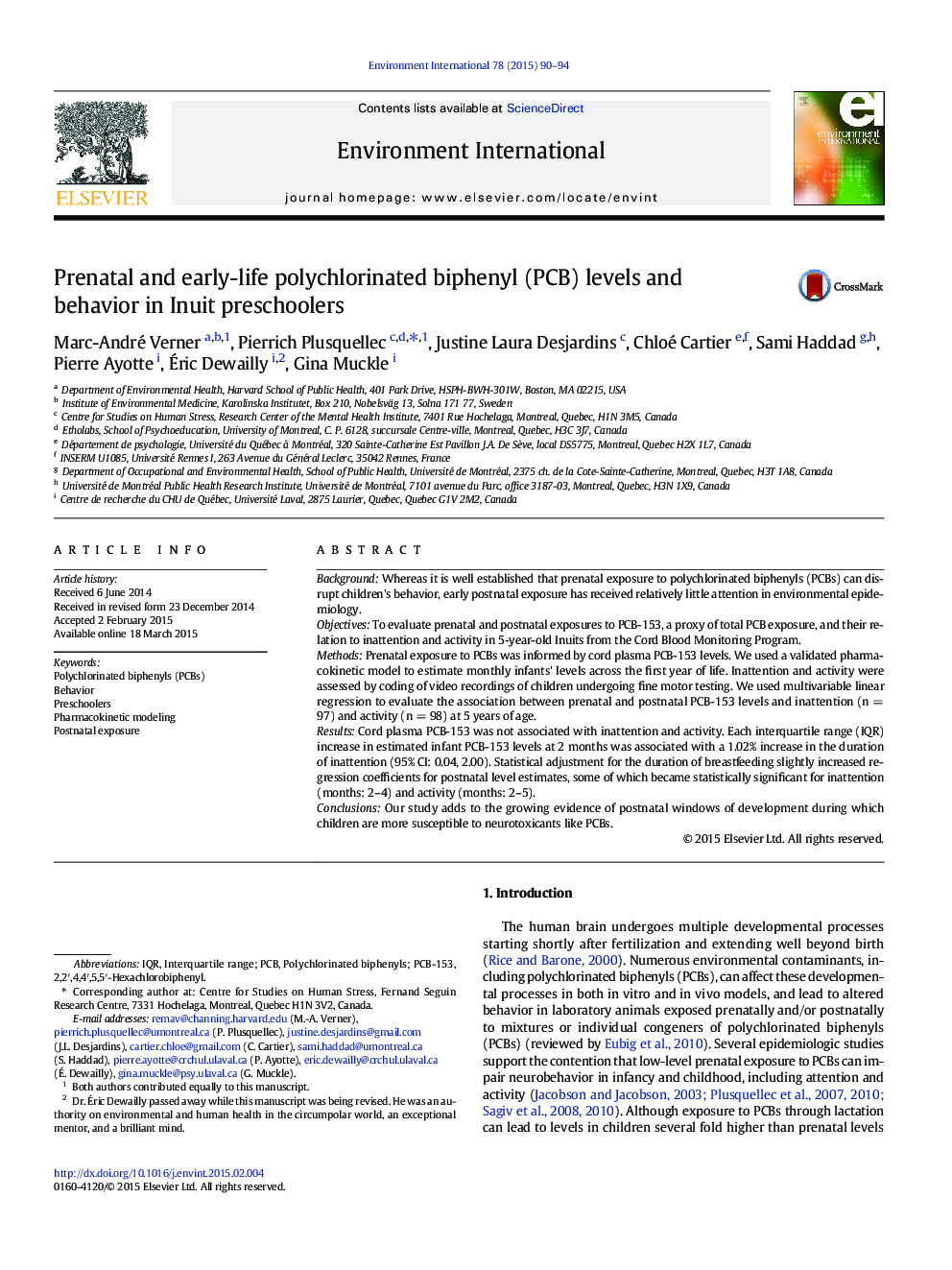| کد مقاله | کد نشریه | سال انتشار | مقاله انگلیسی | نسخه تمام متن |
|---|---|---|---|---|
| 4422727 | 1619050 | 2015 | 5 صفحه PDF | دانلود رایگان |

• Cord plasma PCB-153 levels were not associated with children's behavior.
• Estimated infants' PCB-153 levels at 2 months were associated with inattention.
• Statistical adjustment for breastfeeding increased the strength of associations.
• Results were suggestive of postnatal windows of susceptibility to PCBs.
BackgroundWhereas it is well established that prenatal exposure to polychlorinated biphenyls (PCBs) can disrupt children's behavior, early postnatal exposure has received relatively little attention in environmental epidemiology.ObjectivesTo evaluate prenatal and postnatal exposures to PCB-153, a proxy of total PCB exposure, and their relation to inattention and activity in 5-year-old Inuits from the Cord Blood Monitoring Program.MethodsPrenatal exposure to PCBs was informed by cord plasma PCB-153 levels. We used a validated pharmacokinetic model to estimate monthly infants' levels across the first year of life. Inattention and activity were assessed by coding of video recordings of children undergoing fine motor testing. We used multivariable linear regression to evaluate the association between prenatal and postnatal PCB-153 levels and inattention (n = 97) and activity (n = 98) at 5 years of age.ResultsCord plasma PCB-153 was not associated with inattention and activity. Each interquartile range (IQR) increase in estimated infant PCB-153 levels at 2 months was associated with a 1.02% increase in the duration of inattention (95% CI: 0.04, 2.00). Statistical adjustment for the duration of breastfeeding slightly increased regression coefficients for postnatal level estimates, some of which became statistically significant for inattention (months: 2–4) and activity (months: 2–5).ConclusionsOur study adds to the growing evidence of postnatal windows of development during which children are more susceptible to neurotoxicants like PCBs.
Journal: Environment International - Volume 78, May 2015, Pages 90–94